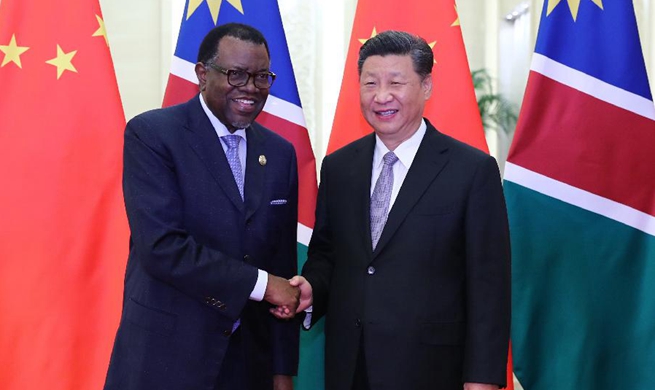BEIJING, Sept. 2 (Xinhua) -- As China and South Africa strengthen economic ties, they are also stepping up cooperation on the world's largest radio telescope to help answer fundamental questions about the origin and evolution of the universe.
The Square Kilometer Array (SKA) will combine signals received at thousands of small antennas spread over 3,000 kilometers to simulate a single giant radio telescope with a total receiving area of approximately one square kilometer and capable of extremely high sensitivity and angular resolution.
The antennas will be built in the southern hemisphere with the cores in Australia and South Africa, where the view of the Milky Way galaxy is best and radio interference is least. SKA will detect faint radio waves from deep space with a sensitivity about 50 times greater than any other radio instrument ever developed.
"SKA will be the largest and most advanced radio telescope ever, and will play a key role in global astronomical research in the next half-century," said Wu Xiangping, a senior Chinese astronomer in the project and an academician of Chinese Academy of Sciences (CAS).
As a member country of the multinational project, China is taking the lead in designing and producing the 15-meter dish-shaped antennas, and is trying to maximize the project's achievements.
The main scientific aims of SKA include exploring the dawn of the universe, studying the evolution of galaxies, cosmology and dark energy, searching for extraterrestrial life and civilization, studying the gravitational field through pulsars and black holes, and the origin and evolution of cosmic magnetic fields.
China has established 11 research groups focusing on these aims, promoting cooperation between universities and research institutes domestically, as well as in-depth and practical collaboration with other countries, especially South Africa and Australia where the antennas will be installed, said Wu.
"We already had close cooperation with Australia in jointly organizing symposiums and training classes. The exchanges between China and South Africa have just started. We will step up cooperation with South Africa, and the priority will be finding common interests," Wu said. "For instance, the study of neutral hydrogen might be a possible direction of joint research. Understanding neutral hydrogen, the first element formed after the Big Bang and the most abundant element in the universe, might help us trace the origin of the universe and study the large scale structure of the cosmos."
Chinese scientists will visit South Africa this year and work with counterparts there to determine the cooperative research field.
China completed construction of the Five-hundred-meter Aperture Spherical Telescope (FAST), currently the largest radio telescope in the world, in September 2016.
Africa's most advanced telescope, Meerkat, was launched in South Africa in July this year. The 64-dish radio telescope is a precursor to SKA and will be integrated into the first phase of the SKA project, which is expected to start in 2020.
China and South Africa have agreed to conduct joint observations of FAST and Meerkat, and exchange data, said Peng Bo, deputy manager of the FAST project and a researcher at the National Astronomical Observatories of the CAS.
"Meerkat excels in resolution while FAST has higher sensitivity. It's like looking at a distant forest, where Meerkat can not only see each tree, but also every leaf. While FAST cannot see each tree as clearly as Meerkat, it can see the darkest place in the forest," said Peng.
"So if we combine the observation data, we can have a clearer and more complete picture of the forest," Peng said. "Over the past two years, research teams of the two telescopes have had seven meetings. The scientists of the two countries have become friends. Personnel exchanges are an important basis for scientific cooperation."

















